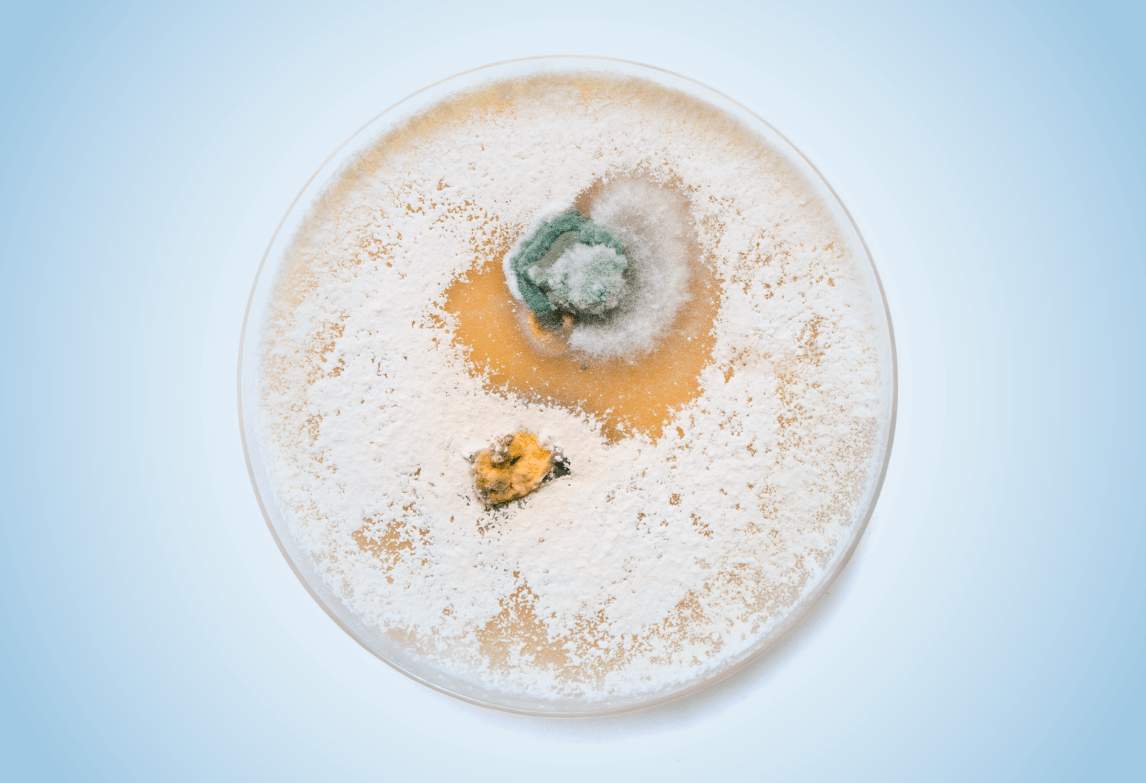Mycotoxins are toxic chemicals that are naturally produced by fungi like mould, which can infest buildings, vehicles, and foodstuffs.
The majority of mycotoxin exposures are through food ingestion or airborne exposure. In fact, mycotoxins are estimated to contaminate 25 percent of the world’s crops.
Damp climates, insect damage, and poor food storage facilitate the growth of mould and hence increase the likelihood and levels of mycotoxin contamination.
A recent study done by the Environmental European Commission earlier this year found that 5 percent of hazelnuts showed ochratoxin (a nephrotoxic, immunotoxic, and carcinogenic mycotoxin) contamination, while 10 percent of dried grapes, 20 percent of dried figs, and 50 percent of pistachios imported from Turkey showed aflatoxin contamination.
Aflatoxin exposure has been correlated with cancer, mental impairment, and liver damage – and is said to be responsible for 28 percent of all liver cancers in the world.
The Link Between Mycotoxins & Disease
Mycotoxins are absorbed in the mucosal epithelia in the airways and the gut and can affect many immune-related organs and cell types.
These interactions suppress immune functions. Multiple types of mycotoxins can cause a decrease in B cells, white blood cells, and hematopoietic stem cells. Exposure to mycotoxins decreases the amount of mature CD4+ cells and splenic T lymphocytes.
This exposure will also affect different groups of cytokines. IL-2 production and IL-2 receptors are decreased, but IL-17, IL10, TGF-a, and MIP-1b are all elevated. These changes in cytokine expression can lead to enhanced tissue damage to multiple different tissues and organs.
Common Mould Markers and their Effects
Aflatoxin
- Sources – Beans, Corn, Rice, Tree Nuts, Wheat, Milk, Eggs, Meal
- Impacts – Liver Damage, Mental Impairment, Abdominal Pain, Jaundice, Headache
Ochratoxin
- Sources – Food & Water-Damaged Buildings
- Impacts – Kidney Function, Neurological Symptoms, Immune Suppression
Sterigmatocystin
- Sources – Grains, Corn, Bread, Cheese, Coffee Beans, Dust from Damp Carpets
- Impacts – Liver Damage, Kidney Damage, Immune Suppression
Roridin E
- Sources – Water-Damaged Buildings, Contaminated Grain
- Impacts – Neurological Damage, GI Distress, Cardiovascular Problems, Endocrine Disruption, Immune Suppression
Verrucarin A
- Sources – Water-Damaged Buildings, Contaminated Grain
- Impacts – Vomiting, Weight Loss, Skin Dermatitis, Nervous Disorders, Reproductive Problems, Immunosuppression
Enniatin B
- Sources – Contaminated Grain
- Impacts – Weight Loss, Fatigue, Liver Damage
Zearalenone
- Sources – Wheat, Barley, Rice, Corn
- Impacts – Reproductive Effects (Disrupts Conception, Ovulation Foetal Development)
Gliotoxin
- Sources – Cereal Crops, Spices, Eggs, Milk, Meat
- Impacts – Neurological Symptoms, Immunosuppression, Liver Function
Mycophenolic Acid
- Sources – Citrus Fruits, Seeds, Grains
- Impacts – Immunosuppression, Birth Defects
Citronin
- Sources – Wheat, Rice, Corn, Flour
- Impacts – Kidney Damage, Immunosuppression
Chaetoglobosin A
- Sources – Water-Damaged Buildings
- Impacts – Gastrointestinal Disorders, Disrupted Cellular Division
How to Reduce and Remove Mycotoxins
Reducing exposure to mould remains the greatest priority when trying to minimise the effects of mycotoxins on the body. The main sources of exposure include:
Food
If foods are the main source of exposure then removing culprit foods is the primary method to reduce overall mycotoxin exposure. Testing for the exact mycotoxins can verify if food is the primary source of mould exposure and which foods, in particular, may be of concern.
Lifestyle & Environment
An individual’s environment can be one of the greatest contributors to their mycotoxin load. Finding and removing any sources of mould in the house, transport and any other places can often be the first step to reducing the impact of mould.
Testing and Treatment for Mould
Testing
Testing remains the most accurate way to determine the presence of mould, alongside exactly what mould markers are present. Knowing the mould markers can narrow down the source of exposure and help choose the most accurate treatment strategies for that individual.
Strategies to reduce Mould
- Hydration – Mycotoxins need adequate levels of water to be fully eliminated from the body, regardless of whether they’re being removed by endogenous detoxification processes, exercise and sweating or supplements.
- Binders – Due to their inert and non-reactive nature, binders can be the supplement of choice for individuals with mould exposure who may also be experiencing allergies and sensitivities to products. Binders can preferentially adsorb and eliminate mycotoxins without interacting with nutrients, the microbiome and other cells in the body.
- Anti-Inflammatory and Antioxidant nutrients – As the main impacts of mycotoxins include suppression of immunity, alongside an increase in inflammation and oxidative stress, anti-inflammatory and antioxidant herbs and nutrients can be specifically beneficial for mycotoxin exposure.
- Exercise and Sweating – Sweating and movement can be one of the most effective ways to eliminate mycotoxins.





